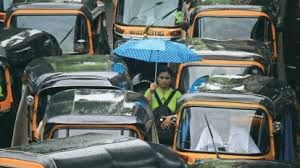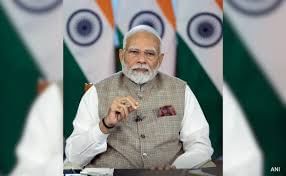UPSC Daily Current Affairs: 19 August 2024 | Current Affairs & Hindu Analysis: Daily, Weekly & Monthly PDF Download
GS2/Polity
UPSC ADVERTISES 45 LATERAL ENTRY POSTS
Source: Indian Express
Why in news?
The Union Service Public Commission recently advertised 45 positions for Joint Secretary, Director, and Deputy Secretary roles across 24 Central ministries. These positions are open for lateral entry, a practice introduced to bring external expertise into mid and senior-level bureaucratic roles. Individuals recruited through lateral entry will serve on a contract basis for an initial three years, extendable to five based on performance. Notably, current central government employees are ineligible for these positions, as stated in the advertisement.
Background and Purpose of Lateral Entry
- Lateral entry enables the recruitment of individuals from non-traditional government service backgrounds to address governance and policy challenges.
- Introduced during Prime Minister Narendra Modi's tenure, lateral entry aims to leverage external knowledge for effective governance.
Historical Context
- The concept of lateral entry was recommended by the Second Administrative Reforms Commission (ARC) in 2005 under the UPA government.
- Chaired by Veerappa Moily, the ARC proposed recruiting professionals from diverse sectors like the private industry, academia, and PSUs to enhance policy implementation and governance.
Criticisms of Lateral Entry
Lack of Diversity and Reservation: The absence of reservations for SC, ST, and OBC categories in lateral entry positions is a significant criticism.
Transparency Concerns
- There are concerns regarding the transparency and clarity of the lateral entry recruitment process.
- Critics highlight issues in determining vacancies, shortlisting candidates, and evaluating their suitability.
Political Interference
- Critics accuse the government of using lateral entry to appoint individuals aligned with specific political ideologies, potentially compromising civil service neutrality.
Impact on Existing Civil Servants
- There are concerns that extensive lateral entry may demotivate current civil servants who have followed traditional career paths.
- It could discourage talented officers from continuing their service within the bureaucratic system.
Potential Bias in Selection
- There are fears that the selection process for lateral entry may show bias towards candidates from specific backgrounds or sectors, impacting the diversity of the bureaucracy.
GS3/ Science and Technology
Dark patterns and digitally conscious products
Source: The Hindu Business Line

Why in news?
The Advertising Standards Council of India (ASCI), in collaboration with Parallel, a product design studio, recently released a report focusing on the prevalence of deceptive patterns in leading Indian apps. This study highlighted the use of one or more of 12 deceptive/dark patterns in most of these apps.
Dark Patterns
Dark patterns refer to deceptive design techniques used in user interfaces to manipulate or deceive users into taking certain actions or making specific choices online. These patterns exploit cognitive biases and behavioral tendencies to trick or mislead users, often for the benefit of the platform or business implementing them.
Examples- Social media companies and Big Tech firms such as Apple, Amazon, Skype, Facebook, LinkedIn, Microsoft, and Google use dark or deceptive patterns to downgrade the user experience to their advantage.
- LinkedIn users often receive unsolicited, sponsored messages from influencers. Disabling this option is a difficult process with multiple steps that requires users to be familiar with the platform controls.
Regulation of dark patterns in India
- In September 2023, the Department of Consumer Affairs sought public comments on Draft Guidelines for Prevention and Regulation of Dark Patterns to act against platforms indulging in this under Section 18 of the Consumer Protection Act, 2019.
- The ASCI aims to expand its code to address concerns around dark patterns in digital advertising.
About the news
The ASCI study highlights several deceptive patterns used by Indian apps to manipulate users. One such pattern is "Interface Interference," where apps use contrasting colors to draw attention to certain options while blending other parts of the screen, subtly steering users toward a specific choice. The study found that over 45% of leading Indian apps use this tactic.
Significance
- The study raises awareness among marketers about deceptive patterns in app interfaces.
- It emphasizes the importance for brands to review guidelines and prioritize ethical design practices.
- Marketers can use resources like the Conscious Patterns website to test their apps and receive a "conscious score," helping them balance business needs with user protection.
GS3/ Science and Technology
REACHOUT Scheme
Source: PIB

Why in news?
The Indian student team, supported by the REACHOUT (Research, Education, Training and Outreach) scheme, achieved remarkable success at the 17th edition of the International Earth Sciences Olympiad (IESO) held in Beijing, China.
What is the REACHOUT Scheme?
- Initiative by the Ministry of Earth Sciences (MoES) under the broader PRITHVI (PRITHvi Vigyan) program.
- Aims to enhance the understanding and dissemination of Earth system sciences through research, education, and outreach activities.
About the International Earth Sciences Olympiad (IESO)
- Established in 2003 during the International Geoscience Education Organization Council Meeting in Calgary, Canada.
- Focuses on promoting interest in earth system sciences, particularly in addressing climate change, environmental challenges, and natural disasters.
India's Participation:
- India has participated in the IESO since 2007 hosted the 10th edition Mysore.
- Indian National Earth Science Olympiad (INESO) serves as a national-level prelude to the IESO, held across schools in India.
- Top-performing students from INESO represent India at the IESO, with support from MoES and the Geological Society of India.
PYQ:
2019
Atal Innovation Mission is set up under the
(a)Department of Science and Technology
(b)Ministry of Labour and Employment
(c)NITI Aayog
(d)Ministry of Skill Development and Entrepreneurship
GS3/Environment
MULTIDIMENSIONAL VULNERABILITY INDEX
Source: The Hindu

Why in news?
The Multidimensional Vulnerability Index (MVI) was recently launched by the UN General Assembly.
Purpose
- Aims of MVI
The MVI offers a detailed analysis of vulnerabilities to aid in creating a resilient and sustainable future for all nations.
- Unique Focus
It provides a nuanced view of challenges faced by countries, moving beyond traditional economic measures.
- Identifying Needs
It helps in recognizing the necessity for concessional financing and other forms of support.
- Enhancing Development
It assists policymakers in pinpointing weaknesses and prioritizing actions for resilience and development.
Dimensions
- Economic Vulnerability
Includes factors like GDP per capita, debt levels, and trade dependency.
- Environmental Vulnerability
Considers exposure to natural disasters, climate change impacts, and biodiversity loss.
- Social Vulnerability
Looks at access to healthcare, education levels, and income inequality.
Benefits
- Targeted Interventions
Through pinpointing vulnerabilities, the MVI allows for more precise and effective interventions, benefiting affected communities.
- Enhanced Resilience
Countries can use MVI insights to bolster resilience against future shocks, lessening the impact of disasters and economic downturns.
- Informed Decision-Making
The index equips decision-makers with valuable data to allocate resources efficiently and implement sustainable development policies.
GS1/Indian Society
Labor Conditions in Southern States
Source: The Hindu

Why in News?
Migrant workers from various parts of India are gradually becoming a noticeable presence in the agricultural fields of Tamil Nadu's Cauvery delta, often called the granary of South India.
Migrants in Tamil Nadu's Cauvery Delta
- Labor Shortage in Agriculture: The Cauvery Delta, known as the granary of South India, is experiencing a significant shortage of farmhands as the younger generation moves away from agriculture. This has led to a reliance on migrant workers, particularly from states like West Bengal and Bihar, who are skilled in paddy transplanting and harvesting.
- Economic Dynamics: Migrant laborers are filling the labor gap during agricultural seasons, working in groups and completing tasks more quickly than local laborers. They charge around ₹4,500 to ₹5,000 per acre, compared to local workers who earn ₹600 per day.
- Sociocultural Integration: While there hasn't been significant tension between migrant workers and local laborers, the integration of migrants into the agricultural workforce is still evolving. Local labor unions acknowledge the presence of migrant workers but do not see it as a widespread issue yet, partly due to the ongoing mechanization of agriculture changing job preferences among the local youth.
Dependence on Migrant Workers in Kerala
- Shift in Labor Sources: Kerala has seen a growing dependence on migrant workers from northern and eastern states, including to fill labor shortages in various sectors, including agriculture. A recent study by the Gulati Institute of Finance and Taxation estimated the number of inter-state migrant workers in Kerala at 2.5 million, equivalent to 7% of the state's population.
- Economic Factors: High wage differentials between Kerala and the migrants' home states, along with a robust urban economy, have made Kerala an attractive destination for migrant laborers.
External Migration from Uttar Pradesh to Maharashtra
- High Migration Rate: Uttar Pradesh tops the list for inter-state job-related migration to Maharashtra, with over 5.7% of migrants moving for employment purposes between 2020 and 2021.
- Concentration of Migrants: Within Maharashtra, districts such as Mumbai and Thane have the highest concentrations of migrants from Uttar Pradesh.
Lack of Proper Data and Registration
- Historical Data Gaps: The last comprehensive survey on internal migration was conducted as part of the National Sample Survey in 2007-08, with the Census 2011 data only partially released in 2020.
- Absence of Real-Time Data: During the COVID-19 lockdown, the Indian government did not collect data on the deaths or job losses of internal migrants. Ministry of Labour and Employment confirmed that it maintained no records of migrant workers who lost their jobs or lives during this period.
- Legislation: The Inter-State Migrant Workmen (Regulation of Employment and Conditions of Service) Act, 1979 was enacted to protect the rights and regulate the conditions of service for migrant workers who move between states in India for employment.
- Implementation Challenges
- Lack of Awareness: Many migrant workers are unaware of their rights under the Act, leading to exploitation and poor working conditions.
- Inadequate Enforcement: There is often insufficient enforcement of the Act by state governments, resulting in widespread violations and the continued presence of migrant workers in informal and unregulated sectors. The absence of accurate data on the number of inter-state migrant workers complicates enforcement and the provision of services.
Way Forward
- Promote Sustainable Employment and Skill Development in Source Regions: To reduce the over-reliance on migrant labor and address labor shortages in sectors like agriculture, the government should focus on creating sustainable employment opportunities in the migrants' home states.
- Real-Time Migrant Data System: The government should create a real-time migrant data system linked with Aadhaar, enabling targeted policies, social security, and effective crisis response for internal migrants.
Main PYQ
Discuss the changes in the trends of labor migration within and outside India in the last four decades. (UPSC IAS/2015)
GS3/Economy
Government Initiatives to Bolster Domestic Clean Technology Manufacturing and its Implications
Source: Business Standard

Why in news?
The Ministry of New and Renewable Energy (MNRE) has reintroduced its mandate that solar projects must source photovoltaic (PV) modules exclusively from a government-approved list of domestic manufacturers starting April 1.
- This decision comes in light of concerns regarding market concentration in India's solar PV module industry and its potential impact on household electricity tariffs.
Government Initiatives to Bolster Domestic Clean Technology Manufacturing:
The ALMM (Approved List of Model Manufacturers):
- Issued by the MNRE in 2021, it mandates all government-assisted or associated solar projects to use only enlisted modules, effectively barring the use of imported modules in most projects.
- The order aims to enhance energy security by reducing import dependence.
- The order was recently reinstated because the enlisted capacity of around 50 GW is considered sufficient, and the duty-free import of solar modules from ASEAN countries is detrimental to domestic producers.
The Production Linked Incentive (PLI) scheme for solar PV modules:
- So far, the MNRE has announced incentives for 48.3 GW of module manufacturing capacities under the PLI scheme.
Positive:
- The Basic Custom Duty of 40% on solar module imports will help grow the consumption demand of domestically manufactured products.
- Manufacturers anticipate a significant increase in solar panel installations due to the PM-Surya Ghar Muft Bijli Yojana's goal of installing one crore household rooftop solar panels.
- Solar panel manufacturers are also hopeful for a policy change in European countries similar to the US, potentially opening the European market for India.
Negative:
- Companies associated with just five manufacturers control nearly half of the current capacity listed on the ALMM.
- Domestic solar modules are now 90% more expensive than imports, with prices reaching 18 cents per watt compared to 9.1 cents for imported modules.
India's Renewable Energy Prospects:
- Current situation:
- India is the 3rd largest energy-consuming country and ranks 4th in total renewable power capacity additions.
- As of May 2024, India's renewable energy capacity stands at 195.01 GW, with specific capacities for solar, wind, small hydro, and large hydro power.
- India announced at COP26 its plan to achieve 500GW of non-fossil fuel-based energy by 2030.
- Future projections:
- India's power consumption is growing at around 10%-12% annually, resulting in an additional power demand of 20-25 GW each year.
- This increasing demand, combined with government initiatives, may lead to a significant rise in the demand for solar installations.
Challenges:
- To reach the 2030 target, India needs to add about 44 GW annually, requiring a substantial investment over seven years.
- Land acquisition and infrastructure development for an efficient transmission network are major challenges that both the industry and government need to address.
- India's per capita power consumption is only around one third of the global average.
GS3/Environment
 |
Download the notes
UPSC Daily Current Affairs: 19 August 2024
|
Download as PDF |
IMD RAIN FORECASTS FOR MUMBAI WRONG BY 42% IN JULY
Source: Indian Express

Why in news?
In July, the India Meteorological Department's (IMD) forecasts for Mumbai were inaccurate by almost 42%. The IMD revised its predictions multiple times within a single day on at least four occasions in July.
Forecast Accuracy Issues
- The IMD issues daily forecasts at 1 pm for a 24-hour period starting from 8.30 am, but the accuracy has been questionable.
- On July 8, Mumbai experienced severe flooding with 267 mm of rain, significantly surpassing the IMD's 115 mm forecast.
- Despite possessing advanced Weather Radar Systems, such as the S-band and C-band radars, accuracy remains a challenge.
Mumbai's Weather Radar Systems
- Mumbai hosts two sophisticated Doppler weather radars, the S-band radar at IMD's Colaba observatory and a C-band radar in Veravali.
- These radars not only track cyclones but also monitor weather developments like thunderstorm activities, providing localized forecasts based on cloud formations.
Challenges in Forecasting
- Despite an expanded observational network with over 400 weather stations, 1,000 automatic weather stations, and 1,300 rain gauges, predicting extreme weather remains difficult.
- Factors like proximity to the sea, ghats, ocean and land temperatures, urbanization, and irrigation activities contribute to the complexity of forecasting.
- The IMD acknowledges the limitations of current models, especially in predicting extremely localized heavy rainfall events.
Conclusion
- Mumbai's diverse geographical factors make weather forecasting a challenging task, with IMD's forecasts often falling short of accuracy.
- Continuous improvements in observational networks and forecasting models are necessary to enhance the accuracy of weather predictions.
GS2/Governance
Do doctors need a Central protection Act?
Source: The Hindu

Why in news?
Resident doctors across India are on strike, demanding safety laws after a young doctor was tragically raped and murdered at R.G. Kar Medical College in Kolkata on August 9.
Why are Healthcare Workers Protesting?
Response to Violence:
- The protests were triggered by the brutal rape and murder of a young doctor at R.G. Kar Medical College and Hospital in Kolkata on August 9, 2024.
Demand for Safety:
- Healthcare workers are demanding laws and measures that ensure their safety while on duty.
Historical Context
Violence against healthcare workers is not a new issue in India. Previous incidents, such as the case of Aruna Shanbaug, a nurse who was sexually assaulted in 1973, underscore a long-standing pattern of violence in healthcare settings.
Working Conditions of Junior Doctors, Interns, and Nurses
Poor Working Environment:
- Junior doctors, interns, and nurses often work in ill-lit and poorly secured hospital environments.
Long Shifts and Exhaustion:
- Many healthcare workers, including the victim of the recent incident, are subjected to excessively long shifts—in this case, a 36-hour duty shift—without adequate rest or safe spaces to recuperate.
Mental Health Concerns:
- The stressful working conditions, combined with the threat of violence, have raised significant concerns about the mental health and well-being of healthcare workers.
Key Demands of the Protesters
Central Protection Act:
- Indian Medical Association (IMA) is advocating for a specific law for healthcare workers, similar to measures in other countries that classify assaults on medical staff as serious offenses.
Enhanced Security Measures:
- Protesters are calling for hospital security protocols that match those of airports, including the installation of CCTV cameras, deployment of security personnel, and improved lighting in hospital corridors and wards.
Safe Work Environment:
- There is a demand for immediate systemic reforms to improve working conditions, including better security arrangements and the establishment of healthcare facilities as safe zones.
Accountability and Justice:
- The IMA has requested a thorough investigation into incidents of violence against healthcare workers, with a focus on timely and professional handling of cases and ensuring that perpetrators face exemplary punishment.
Government Response
Following the protests, the Ministry of Health and Family Welfare issued an order mandating that any violence against healthcare workers must be reported and acted upon swiftly, with institutional FIRs to be filed within six hours of an incident.
Sole responsible for the safety of Health workers:
State Governments:
- Health and law enforcement are primarily state subjects in India, meaning that state governments are primarily responsible for ensuring the safety of healthcare professionals. They are tasked with implementing laws, providing adequate security in hospitals, and ensuring a safe working environment for medical staff.
Central Government:
- The central government plays a role in formulating national policies and frameworks that support the safety of healthcare workers. Recent initiatives include the Ministry of Health and Family Welfare’s order mandating the filing of FIRs within six hours of any violence against healthcare workers, indicating a push for accountability and swift action.
Way forward
Implement a Central Protection Law for Healthcare Workers:
- The government should fast-track the enactment of a Central law specifically designed to protect healthcare workers from violence.
Improve Working Conditions and Mental Health Support:
- Hospitals should prioritize creating safe and well-secured environments for healthcare workers, including reasonable shift hours, adequate rest periods, mental health support, and robust security protocols to prevent future incidents of violence.
GS2/International Relations
PM MODI PROPOSES GLOBAL COMPACT
Source: The Indian Express

Why in news?
PM Narendra Modi suggested a human-centered "Global Development Compact" during the Voice of the Global South Summit.
Background:-
- The Global Development Compact draws inspiration from the development priorities outlined by Global South countries.
Key takeaways
- PM Narendra Modi highlighted the failure of global governance and financial institutions established in the previous century to address current challenges.
- Global Development Compact:
- Debt-Free Development: Under this initiative, countries in need will not be burdened by debt in the guise of development finance. Instead, the Compact will leverage India's development journey and experiences in partnerships.
- Focus Areas: The Compact will emphasize trade for development, capacity building for sustainable growth, technology sharing, project-specific concessional finance, and grants. To bolster trade activities, India will establish a special fund of USD 2.5 million, with an additional USD 1 million designated for this purpose. The compact aims to facilitate balanced and sustainable development in partner countries.
- Closing the Global North-South Gap:
- Call for Unity: PM Modi encouraged solidarity among Global South nations, advocating for a unified voice and mutual support through shared experiences. He proposed that the upcoming UN Future Summit could serve as a significant milestone in this endeavor.
- Understanding Global North and Global South:
- Global South: Encompasses the countries of Asia, Africa, Latin America, and Oceania, home to 88% of the global population. These nations often have a history of colonialism and have traditionally lagged in industrialization and development.
- Global North: Consists of developed nations in North America and Europe, known for their historical imperial policies and advanced levels of development.
- Distinctive Features: The Global South typically exhibits lower development levels, higher income inequality, rapid population growth, agrarian economies, reduced quality of life, shorter life expectancy, and significant external dependence. However, the classification is more about political, geopolitical, and economic similarities than merely geographical location.
GS3/Enviro & Biodiversity
Zoopharmacognosy: the study of how animals self-medicate
Source: The Hindu

Why in news?
Researchers highlighted the zoopharmacognosy (practice of self-medication) by a Sumatran orangutan using the plant Fibraurea tinctoria to treat a facial wound.
What is Zoopharmacognosy?
- Zoopharmacognosy is the study of how animals use natural substances like plants, soils, and insects to treat their own illnesses.
- The term was coined by ecologist D.H. Janzen from the University of Pennsylvania.
- It shows that animals have an instinctive ability to find and use natural remedies.
Key Studies and Observations
Neanderthals
- In 2012, a Nature publication found that Neanderthals in Northern Spain used plants like yarrow and chamomile to treat infections.
Other Animal Species
- Primates: Chimpanzees eat bitter leaves, like Vernonia amygdalina, to get rid of intestinal worms.
- Pregnant lemurs nibble on tamarind leaves to aid milk production.
- Reindeer: Reindeer eat mushrooms like Amanita muscaria, possibly to fight off parasites.
- Birds: Starlings line their nests with antimicrobial plants to protect their young from diseases.
- Elephants: Pregnant elephants in Kenya eat specific plants to help induce labor.
- Dogs: Dogs chew grass and then vomit to clear their stomachs of infections.
PYQ:
[2019] Recently, there was a growing awareness in our country about the importance of Himalayan nettle (Girardinia diversifolia) because it is found to be a sustainable source of:
(a)Anti-malarial drug
(b)Biodiesel
(c)Pulp for paper industry
(d)Textile fibre
|
39 videos|4564 docs|977 tests
|
FAQs on UPSC Daily Current Affairs: 19 August 2024 - Current Affairs & Hindu Analysis: Daily, Weekly & Monthly
| 1. What are the 45 lateral entry posts advertised by UPSC? |  |
| 2. What is the REACHOUT Scheme and how does it aim to help vulnerable populations? |  |
| 3. How accurate were the IMD rain forecasts for Mumbai in July, according to the article? |  |
| 4. What is the significance of the Multidimensional Vulnerability Index mentioned in the article? |  |
| 5. Why is there a need for a Central protection Act for doctors, as discussed in the article? |  |


























